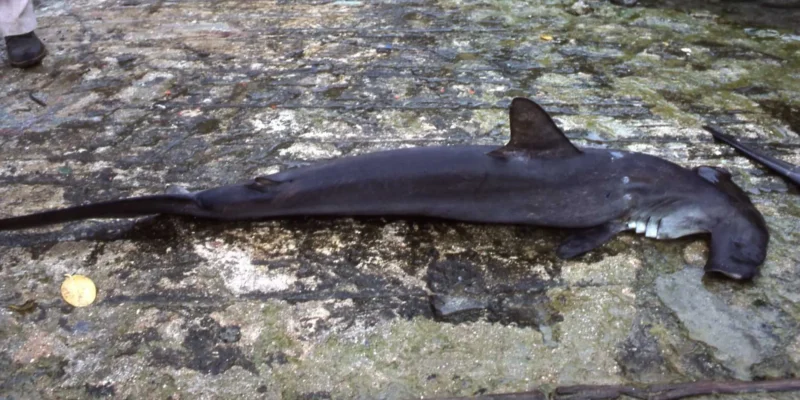On Guatemala’s Pacific coast, alarming findings are increasing: monitoring in Buena Vista (Champerico, Retalhuleu) shows that 95% of the scalloped hammerheads (Sphyrna lewini) caught are juveniles. The species is classified as endangered and is listed in the country’s Pacific register of threatened species. The high removal of immature animals threatens the recovery of the population.
Numbers and biology: why the offspring matters
According to Fundación Mundo Azul, the scalloped hammerhead can reach up to 4.30 meters in length and weigh an average of 230 kilograms; its life expectancy is 20 to 30 years. The species is placental-viviparous: females give birth to fully developed young. Gestation lasts 10 to 12 months, with – depending on the study – about 25 to 45 pups born per litter. If mainly juvenile animals are caught, future parent animals are missing – a vicious cycle for the population.
Rules exist, enforcement is weak
Fisheries are regulated by the Fisheries and Aquaculture Law (Decree 80-2002) and its implementing provisions (Regulation 223-2005): closed seasons, minimum sizes, and permitted fishing gear are intended to protect stocks. In practice, however, oversight is limited – the responsible authority (MAGA, Fisheries & Aquaculture Unit) has only very few inspectors nationwide. As a result, regulations can hardly be enforced comprehensively along the coast.
Key role in the ecosystem
As a top predator, the scalloped hammerhead regulates prey populations such as fish, squid, crustaceans, and rays. If predation pressure collapses, prey species can proliferate – with chain reactions that even alter seagrass and algae stocks. Protecting the shark therefore also benefits coastal fisheries and tourism.
What helps now
Experts recommend consistently preventing the catch of juveniles: effective closed seasons in nursery areas, minimum sizes, selective fishing gear, as well as local monitoring programs with fishers. Education in communities and reliable controls are crucial to ensure that the rules work in everyday practice.
"Without offspring, a population quietly collapses. The protection of young hammerheads determines the future of the species."




